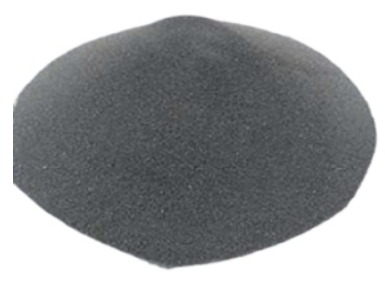What is Nano-diamond?
Nanodiamonds were developed as early as more than 30 years ago. Still, its application used to be limited to the field of abrasive abrasives such as polycrystals and polishing agents. With the deepening of people's understanding of the properties of nano-diamondsnanodiamond, nanodiamond has been applied in metal coating, lubricating oil, magnetic recording systems, medicine and other fields, and the application field is still expanding. Nanodiamond polishing liquid is widely used in semiconductor silicon polishing, computer hard disk substrate, computer head polishing, precision ceramics, artificial crystals, cemented carbide, gem polishing and other fields with excellent performance. Russia uses nanodiamondsnanodiamond to polish quartz, optical glass, etc., and its polishing surface roughness reaches 1nm. The application of nanodiamonds nanodiamond shows many advantages. Due to the ultra-fine and ultra-hard, the problems in optical polishing are easily solved. Fine polishing is a complex problem in optical polishing; the original method used an abrasive, which took dozens of hours repeatedly, and the efficiency was very low. Nanodiamond is used to improve the polishing speed significantly. The time required to polish the same workpiece is only ten hours to tens of minutes, and the efficiency is increased tens to hundreds of times. The following are some examples of the many applications of nanodiamonds. From these cases, it is not difficult to conclude that nanodiamonds can adapt to and meet the needs of super-finishing development. The application of nanodiamonds in lubricants, greases and coolants is mainly used in the mechanical industry, metal processing, engine manufacturing, shipbuilding, aviation, and transportation. The addition of nanodiamonds to the lubricating oil can improve the working life of the engine and transmission device, save fuel oil, reduce the friction torque by 20 ~ 40%, and reduce the friction surface wear by 30 ~ 40%.1000 kg of oil consumes 0.1 ~ 0.2 kg of nanodiamond. The application of nanodiamonds in lubricating oil must solve its stable suspension problem, and the company has solved this problem.

The emerging development field of nanodiamond
Nanodiamond polymer complexes are used in aviation, automotive, tractor, Marine manufacturing, medicine, chemical, petrochemical, globe valves, and protective and wear-resistant coatings. Fluoroplastic rubber and polysiloxane-based high-efficiency coatings have been developed. The elastic strength properties of polyisoprene rubber, styrene-butadiene rubber, nitrile butadiene rubber and natural rubber have been greatly improved. The addition of nanodiamonds in rubber can reduce wear by 2 to 4 times on average, improve the fracture resistance by 30%, and increase the failure temperature by 15%. The epoxy resin adhesive containing nanodiamonds has higher adhesion and cohesion, and adding nanodiamonds to the polymer can improve its strength, wear resistance and thermal ageing resistance. 1000 kg of rubber (polymer) consumes 1 ~ 5 kg of nano diamond, and 1000m2 of polymer coating consumes 1 ~ 5 kg of a diamond. Nanodiamond is mainly used in abrasive abrasives to mix with transition metals to manufacture sintered diamond with high strength and low porosity, and its microhardness can reach 6000 ~ 7000kg/mm2. It can process soft or brittle materials, and processing surface roughness is very low. The microhardness of polycrystalline diamond obtained by sintering under 10-12gpa pressure can reach the level of natural diamond single crystal if the carbon is epitaxial or the diamond micro powder synthesized by static pressure is added in advance. Made of drill bits to drill high-strength rock formations, it can meet or exceed CB-S (Russia) polycrystalline performance. The yield of the sintered body is almost doubled, and the compressive strength is increased from 1.7GPa to 2.2GPa by using nanodiamond as the component of silicon impregnation. The sintered body is used as the cutting element of the drill.
Biomedical applications of nanodiamonds
Adsorption of biomolecules: nanodiamond due to the large specific surface area, chemical stability, surface functional groups and other properties, through the hydrophilic, hydrophobic and electrostatic force to achieve adsorption of small molecules and large biomolecules, used in the field of medicine, including drug loading, anti-cancer treatment, protein separation, sterilization, etc., in the field of biomedicine play an increasingly important role. The gene delivery platform based on nanodiamond is a simple, fast and extensive gene transmission tool. Nanodiamond is modified and combined with genes through electrostatic action, has a high affinity for nucleic acid, and can promote gene transfer to the nucleus, thus enhancing the therapeutic ability of diseases, but also shows low cytotoxicity characteristics; therefore, nanodiamond gene delivery for targeted therapy is a promising disease treatment method. Biosensing: Fluorescent nanodiamond has the advantages of high light stability, bright multicolour fluorescence, low biological toxicity, stable physical and chemical properties, etc., and has application value in biosensing. Markers that play an essential role in cell growth, such as hydrogen peroxide, glutathione, metal ions, etc., are often detected by the fluorescence changes when combined with organic fluorescent probes or reacting with them. However, organic fluorescent probes are easy to bleach under solid light source excitation, and nanodiamonds will not photobleach even under intense light irradiation. In addition, there is no fluorescence change when interacting with biomolecules, so fluorescent nanodiamonds are often developed for biological applications such as detection, biosensing, cell tracing, and cell activity exploration.
Nano-diamond supplier
Luoyang Tongrun Nano Technology Co. Ltd. (TRUNNANO) Luoyang City, Henan Province, China, is a reliable and high-quality global chemical material supplier and manufacturer. It has more than 12 years of experience providing ultra-high quality chemicals and nanotechnology materials, including foam concrete, nitride powder, graphite powder, sulfide powder, and 3D printing powder. If you are looking for high-quality and cost-effective foam concrete, you are welcome to contact us or inquire at any time.


